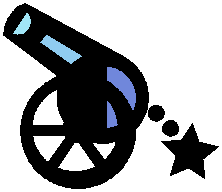Monday, August 25, 2008
What is a "musical canon"?
__A musical canon is a piece of music that showcases one melody adapted to various forms, each form shadowing the other. Perhaps the most well-known musical canon is "Pachabel's Canon." It's an amazing example of how the form works; one melody is changed slightly over the song's duration and the variations shadow each other at set points. But the melody in a musical canon doesn't necessarily have to change. Consider the "Row, Row, Row Your Boat"-type round; the melody in this musical canon stays exactly the same, letting the shadowing take center stage.
The musical canon comes in numerous shapes and sizes, but the most familiar (and frequently used) types are the inverse musical canon, the contrapuntal canon and the backwards canon. The inverse musical canon is precisely what the name denotes: a musical canon in which one or more melodies are inverted. Note, however, that this doesn't mean the melody itself is played backwards; the inverse musical canon inverts only intervals -- where the lead melody moves a third up, for example, the following melody moves a third down.
The contrapuntal musical canon is like "Pachabel's Canon"; the melodies are all slightly different but work well together and shadow each other in the same places. The shadowing is the most important thing in the contrapuntal musical canon, as how the melodies link together will ultimately determine their ability to complement each other.
The backwards musical canon is exactly what the inverse musical canon is not; it's a musical canon in which the following melody is played backwards from the lead melody. It's almost like reversing a tape loop; the intervals stay exactly the same, as do the notes, but they're played in the reverse direction from the lead melody in the musical canon.
Subscribe to:
Comments (Atom)


